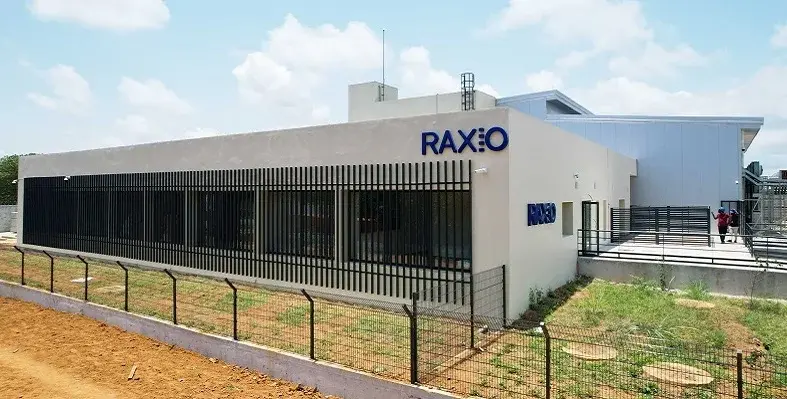What were the power challenges behind one of West Africa’s latest data centres and how were these overcome by leading carrier-neutral Tier III data centre operator, Raxio Group?
In September 2024, Raxio Group officially inaugurated its new state-of-the-art data centre in Abidjan, Côte d’Ivoire. Christened the CIV1 data centre, it represented the country’s first Tier III certified carrier-neutral and cloud-neutral facility and is fully equipped with best-of-breed technology. Capable of housing up to 800 racks at full capacity and delivering 3MW of IT power to customer support, it was delivered to help drive the appetite for data consumption and local content by digital users in the country as well as being strategically located to serve the WAEMU economic block.
“The inauguration of our Abidjan data centre establishes us firmly in West Africa, a key growth sector for our continued expansion,” explained Robert Mullins, CEO of Raxio Group. “Abidjan is the ideal location for organisations and businesses from across the economic region to collocate their mission critical infrastructure in a highly reliable and secure facility. We are proud to contribute a fundamental cornerstone to facilitate Côte d’Ivoire’s continued digital growth and cement its hub status in the region.”
Vital infrastructure in West Africa
According to Raxio, the facility is supported by multiple paths for power and fibre connections, and cutting-edge redundant equipment, which underpin its Tier III certification. The 24/7 ‘always-on’ data centre is positioned along key fibre routes, with six connectivity providers currently supplying fibre to the facility. CIV1 will also serve as host to the country's Internet Exchange Point (CIVIX) allowing for low-cost interconnection of local and international traffic in an optimal, carrier-neutral environment.
By nature, data centres are power-hungry facilities with the International Energy Agency suggesting that after globally consuming an estimated 460TWh in 2022, they could reach more than 1,000TWh by 2026. As such, as a new, integral part of the region’s digital infrastructure, it is vital that the CIV1 facility power needs are accounted for. To learn more about how Raxio Group has taken on this challenge, African Review heard from Rob Saunders, chief technology officer at Raxio Group:
African Review (AR): How are you meeting the primary power needs of this facility?
Rob Saunders (RS): We ensure reliable primary power for our facility through two independent (N+N) 15kV feeders sourced directly from the CIE substation. Each feeder is capable of supporting 100% of the facility’s load, providing full redundancy to safeguard against any single point of failure.
AR: Are there any additional measures being taken to provide critical backup power?
RS: Yes, we have implemented a Tier III compliant backup power system to ensure uninterrupted operations. Our emergency generators are continuous-rated at 1,500KVA and are installed in an N+1 configuration to provide redundancy. This ensures that if one generator fails or is taken offline for maintenance, the remaining units can seamlessly handle the entire load.
AR: Was there any challenges with this particular project regarding the energy requirements and how were these overcome? Did you receive any support from external companies to meet the power needs?
RS: Raxio Engineering and PMO teams worked proactively to coordinate with the local utility provider ensuring smooth design and integration of the power feeds with minimal delays. Our partners offered the technical expertise and on-site resources, helping us to overcome unforeseen challenges and ensuring that our design complied with the local authority regulations.
AR: The power-intensive nature of data centres is presenting a real challenge around the world, but especially in Africa. On the continent, does Raxio have a preferred strategy for meeting the needs of its new facilities?
RS: Our approach is all about designing energy-efficient data centres that use as little power as possible. A big part of this is achieving a low Power Usage Effectiveness (PUE), which measures how well we manage energy beyond just running the IT equipment. By fine-tuning things like cooling systems, power distribution, and the overall facility layout, we cut down on unnecessary energy use and, helping us keep the power demands of the entire operation as low as possible.
AR: It was also mentioned in the press release of the sustainable practices you encourage. Could you explain this in a bit more detail in regards to what steps you are taking at your facilities? Have you looked at meeting some of your power needs through renewables?
RS: Yes, we’re currently exploring the use of renewable energy for our facilities. It’s worth mentioning that some of our facilities are already connected to substations powered by renewable sources. As a result, a large proportion, of our portfolio is already running on clean energy. In fact, this is a key factor we consider when selecting a plot or substation during the initial technical assessments for any new data centre location.
We are also looking at various strategies to support with decarbonising our portfolio, this includes evaluating new materials, energy-efficient technologies, renewable energy solutions, and innovative cooling methods to minimise our environmental impact while meeting operational demands.






